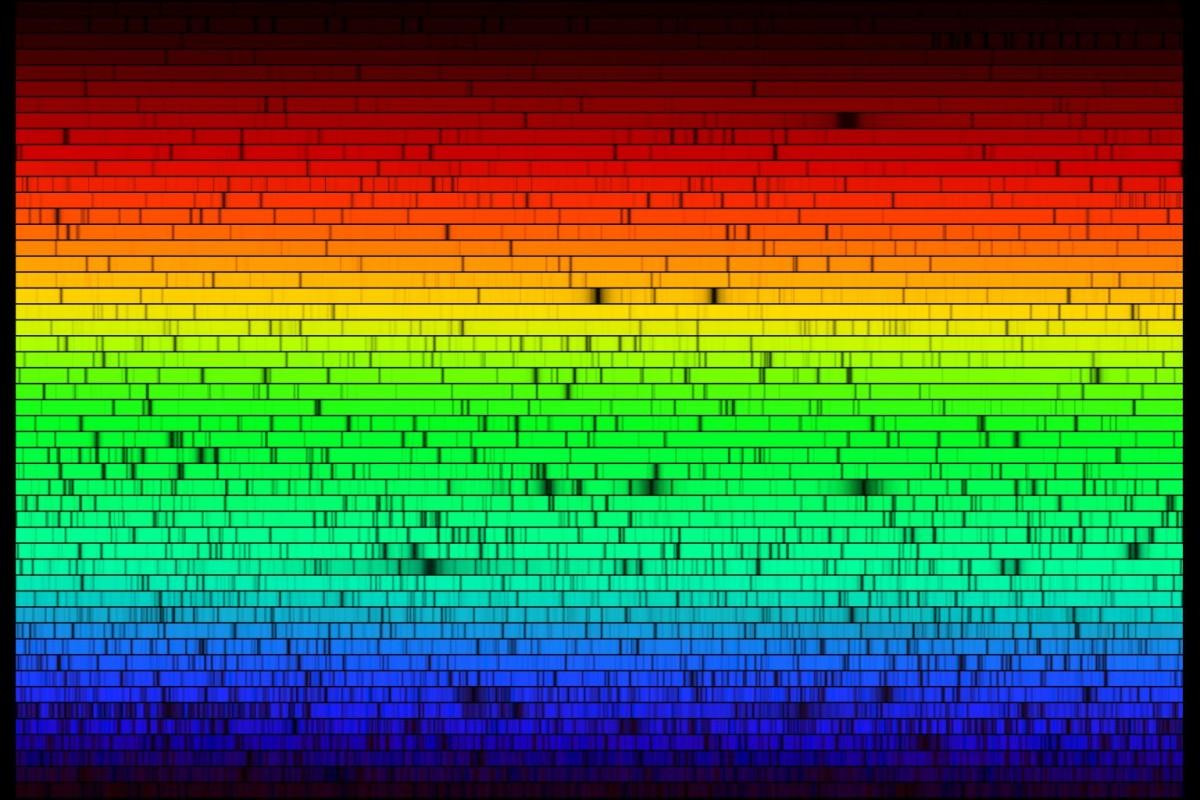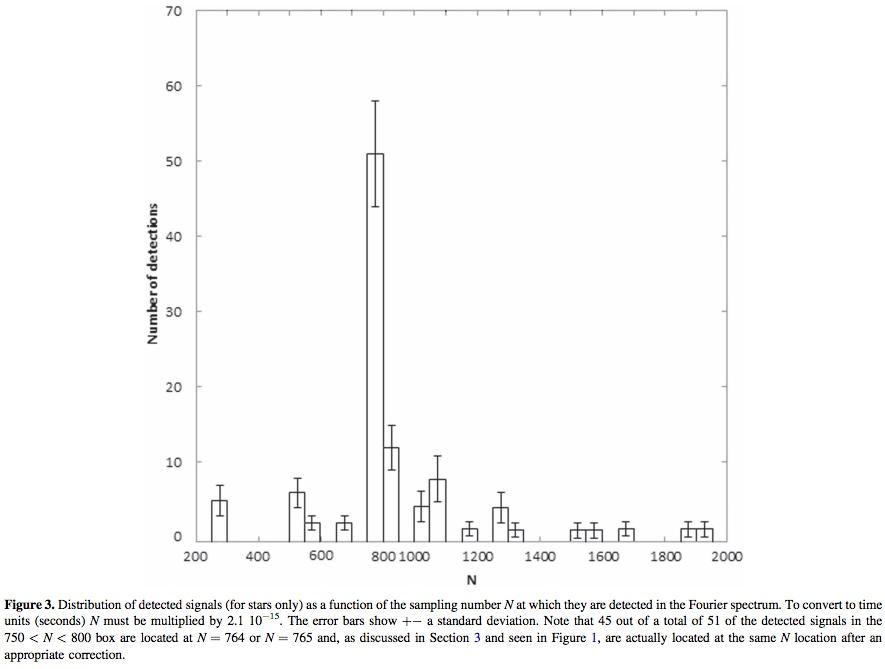Ask Ethan: Does the data on the 234th sun-like stars indicate the presence of extraterrestrial life?

Reasonable signals may be superimposed on the optical signals of a star with an extraterrestrial civilization circling around it.
Without a doubt, one of the most interesting opportunities associated with science is the likelihood that we are not the only intelligent and curious race in the universe. It is believed that in the history of the solar system we are the only beings who have ever been interested in the origins and nature of the universe. But only in our Galaxy there are hundreds of billions of stars, and, possibly, of planetary systems in it are decent. A recent study claimed that of the million stars studied, about 0.01% of them - one out of 10,000 - show signals that could be signs of an extraterrestrial intelligence. Is it so? This is exactly the question of one of our readers, who simply sent a link to the work " The discovery of strange periodic spectral modulations in a small fraction of solar-type stars " and wrote:
If in doubt, ask Ethan.
Great plan, Ben.

Obvious evidence of an extraterrestrial civilization. Or the Olympic Park and the communications tower in Barcelona.
If you stupidly follow the headlines, then " Scientists claim that they have found 234 alien civilizations " smacks of stupid sensation. So far, no such statement has ever concealed the real discovery of aliens. And still, such statements appear with enviable periodicity, and with them - and attempts to numerically assess the probability of the presence of extraterrestrial intelligence, despite the fact that we are the only successful example of intelligent beings. But we will talk about the strict science behind this statement, so the answer will be that it may be aliens, but most likely not. Let's figure it out.
')

Hyades Cluster , closest to the Sun is an open cluster of stars
Ask yourself: if you were looking for aliens, what exactly would you pay attention to? Would you choose a star resembling the Sun, and start looking for signals similar to those created by humans? The task is difficult, for stars similar to the Sun are quite small (class G stars in the Universe are about 5% of all types), human signals are suppressed by radiation emanating from a star, and in most solar-type star systems there will be no intelligent life. Perhaps it will be much more interesting to look for some periodic signals from various stars, and if the signal corresponds to any sensible sequence - one that is unlikely to appear in nature, but very similar to an artificial one - perhaps we would find evidence of aliens.

Telescope of Sloan Digital Sky Survey
The best data on the stars of our Galaxy are collected as a result of the Sloan digital celestial survey (SDSS). This telescope has one of the most advanced cameras for today. She is capable of:
• Make deep and wide-angle surveys of areas of the sky.
• Determine the spectrum of multiple objects at once.
• Observe objects for long periods and measure their changes.
The vast amount of knowledge gained about the incredible variety of aspects of the Universe derived from SDSS, from stars and galaxies to cosmology, ensured the priority of the WFIRST mission in the list of NASA projects for the 2020s. This will be an advanced version of SDSS in space, capable of finding supernovae! But a simple observation of the stars may already amaze scientists.

Solar spectrum visible range
In public access, there are 2.5 million spectral portraits collected by SDSS over a long time period, in which periodic variations in intensity can be sought. Of these 2.5 million, some periodic signals must occur for natural reasons, and most of these fluctuations occur on time scales of the order of a second or more. But two Canadian scientists, Ermanno F. Borra and Eric Trotje, became interested in very rapid changes - at intervals of up to 100 picoseconds ( 10-12 ). Why are such variations interesting? Because they can be detected simply by studying the spectrum of stars — this was the theoretical homework of Borra, a pioneer in this field.

If you do not go into details, they found that most stars do not show any "interesting" variations, or variations in this high frequency range with a large signal-to-noise ratio. But a few of them, 234 of the 2.5 million, demonstrated. Moreover, they did it very similarly to one another: about 50 of them showed a period of oscillation in the interval from 1.64 to 1.67 picoseconds.
And all these "interesting" stars were either of the same type as our Sun (G-class), or a little brighter (F-class). Apparently, something happens in 0.01% of the stars, which causes them to demonstrate these unusual, but not unique, superfast variations.
blogs-images.forbes.com/startswithabang/files/2016/10/f12_borra_trottier.jpg
Almost all stars with a variation of 1.65 ps belong to the F or G classes, just like our Sun
So what makes them do it, the responsible scientist may ask. Borra and Trotje decided to consider four possibilities that could lead to rapid periodic variations:
1. Rotational transition in molecules .
2. Fourier transform of spectral lines.
3. Fast ripple of stars.
4. Aliens.

Sunset on an alien planet as an artist
The first can be crossed out fairly quickly, since the molecules creating such a periodic effect could be easily found in interstellar space. But they are not there. The second is a rather confusing phenomenon, and again Borra is a pioneer in this field. After a long and careful analysis, Borra and Trotje concluded: "probably not." They described the third opportunity in their work:
In principle, fast pulsations in small parts of the atmosphere of stars can generate such signals. However, the periods in Fig. 1 demonstrate that the period of pulsations should be about 1.65 × 10 −12 s, which is unrealistically short for stars.
“Therefore,” they conclude, “they are aliens.”
In this way, the authors come to a conclusion about aliens, and journalists who have not looked further their work, come to the same conclusions. Hearing this, I immediately remembered the movie "The X-Files" of 2008. The one whose subtitle was "I want to believe."

But if you wanted to be a responsible scientist, what conclusion would you draw from that study?
So, for example:
We used the technology we developed to search for very fast variations in stars based on the search for their spectral characteristics. We found that 99.99% of the stars do not have them, but about 0.01% of the stars have them. Most of the stars with such variations have an unusual property: almost all of them resemble the Sun, and variations fit into a certain time scale: 1.65 × 10 −12 s. We do not think that these are rotational transitions in molecules or ultrafast pulsations, since the first contradicts observations, and the second is the theory of stars. After a detailed analysis, we do not believe that this can be attributed to the Fourier transform artifact.
Instead, we have an interesting observation, which we believe should be investigated further. Most likely, something happens in these 234 stars, which potentially can teach us something new, connected with a small percentage of stars. It is less likely that this is an artifact of the Fourier transform of spectral lines — this can show a more thorough analysis. As a result, if it is not possible to find physical or analytical explanations, we can consider the option that the signal was created by extraterrestrial intelligence. Some authors have suggested that fast, periodic, and directional signals can be a good way for an extraterrestrial civilization to declare itself.
The last conclusion, which people tend to, is promoted by just one person. And again, this makes Ermanno Borra in his 2012 article.

A massive transmitter can send a sensitive radio signal from an alien outpost, but some dream of optical signals instead
Therefore, authors and journalists who wrote on this subject with enthusiasm can be informed that their reports were biased. I can reply to the reader that he can still consider the possibility that aliens are sending signals - at any moment it may turn out that aliens are doing something - but next time you need to look for a verifying opinion from a person who is not very enthusiastic about extraordinary. In most cases, it turns out that the knowledge we obtained is a new, small interesting feature, and not a revolution of our views on the Universe.
Ethan Siegel - astrophysicist, popularizer of science, blog Starts With A Bang! He wrote the books Beyond The Galaxy , and Treknologiya: Star Trek Science [ Treknology ].
Source: https://habr.com/ru/post/373717/
All Articles